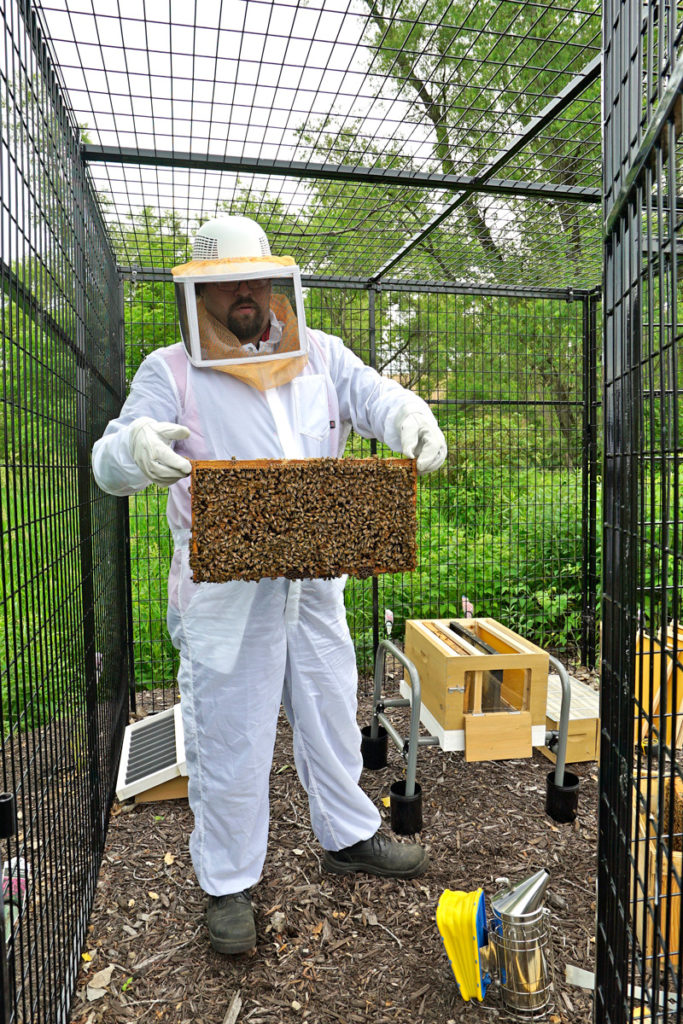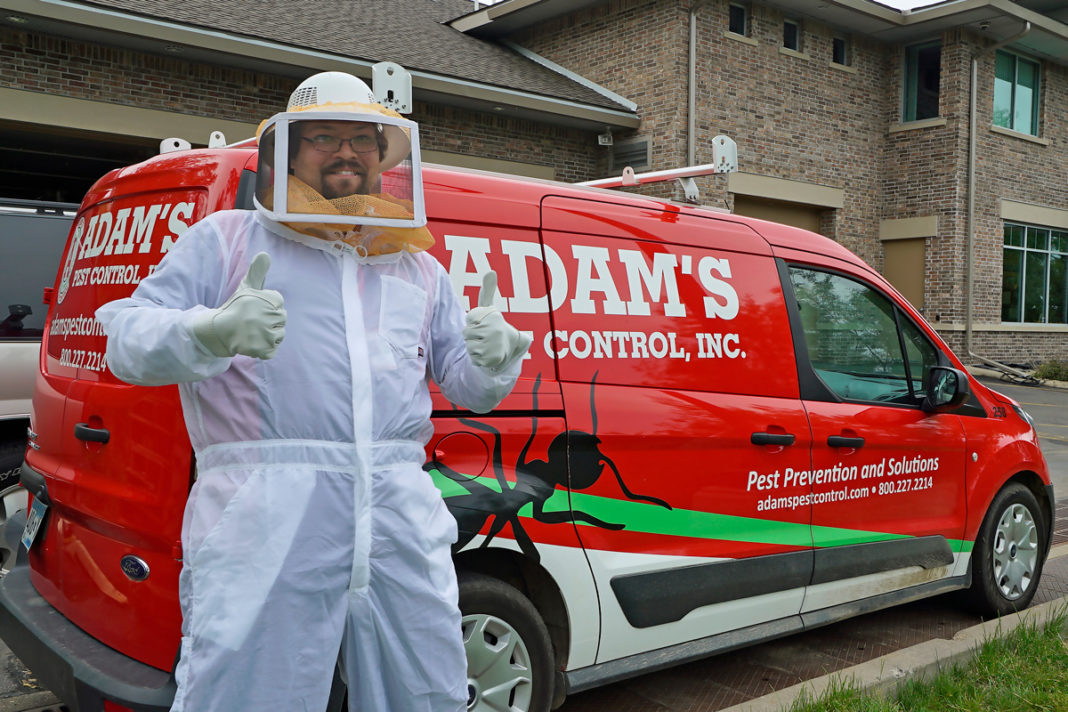At first, beekeeping and a message of conservancy may seem inconsistent coming from a pest management company, but not when that company is Adam’s Pest Control.
Adam’s championed the ability to keep bees in Medina. Because of our interest, Medina’s City Council changed its local ordinance to allow small-scale beekeeping (up to 4 hives) on commercial properties. (Beekeeping on small residential lots in Medina is still prohibited.)

We began beekeeping in June 2019 when we first introduced approximately 12,000 bees to our new hive. The queen and her colony are Minnesota-hardy bees, which were selected because of their ability to thrive in our harsh winters. The hive, enclosed in an 8’ x 8’ x 7’ height cage that protects the bees from natural predators, inquisitive onlookers, and tree branches, is located in the rear corner of our property on Highway 55, with access to a large wetlands area. With advice from the University of Minnesota’s Bee Lab, we planted a variety of bee friendly plants that were specifically selected to provide flowers throughout the growing season.
Our commitment to saving pollinators expands into our daily work.
- We do not apply pesticides to any blooming or flowering plants or trees, including weeds. Nor do we allow pesticides to drift onto blooming plants adjacent to the target plants.
- We do not use any systemic agricultural pesticides, including neonicotinoids, on any plants.
- If we discover honey bees nesting inside wall, we provide a list of local beekeepers the property owner may call to arrange for safe relocation of the bees.
Why Protecting Bees is Important:
- Honey bees and other pollinators perform about 80 percent of all pollination of the plants that produce 90% of the world’s food. A third of the world’s food production depends on bees.
- Grains are primarily pollinated by the wind, but many fruit, nut and vegetable plants cannot reproduce without the help of insect pollinators.
- A single bee colony can pollinate 300 million flowers each day.
How to Differentiate Bees from Wasps:
- Bees are fuzzy pollen collectors with yellow and black stripes that are a combination of hair color and body color.
- Wasps generally have two pairs of wings and hairless bodies.
- Their black and yellow rings are always directly on their bodies.
- Hornets are larger and typically brownish and have dull orange stripes on their bodies.
- Wasps also have pinched abdomens, bees do not.
What You Can Do to Help Save the Bees:
- You can make a difference by taking a few, simple steps to create a pollinator-friendly landscape:
- As your soil, light and space permit, choose native plants that attract pollinators
- Purchase plants that have not been treated with systemic insecticides
- Accept a higher threshold of tolerance for garden pests
- Use an “Integrated Pest Management” approach in your lawn and garden
- Always read and follow instructions on the label when applying pesticides
- Limit insecticide applications to “spot treatments” and apply in early mornings or late evenings when bees are not foraging – being mindful of “drift.”
- Inform friends and neighbors about your pollinator-friendly approach to your lawn and garden and encourage them to do the same.
Additional Resources:
University of Minnesota Bee Lab: www.beelab.umn.edu
Plants for Pollinators: http://cues.cfans.umn.edu/old/pollinators/plants.html
Gardening for Pollinators: www.fs.fed.us/wildflowers.pollinators/gardening.shtml







